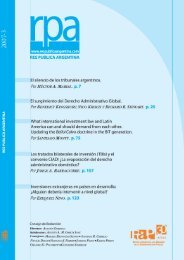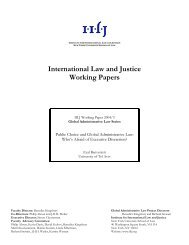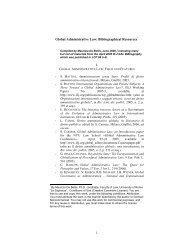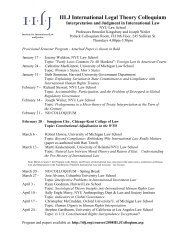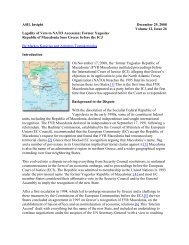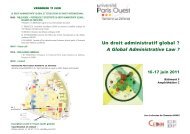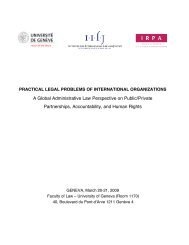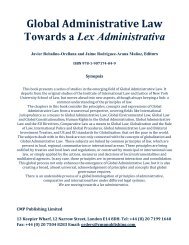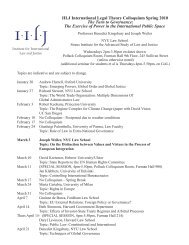brought under the dominican republic - central america - ita
brought under the dominican republic - central america - ita
brought under the dominican republic - central america - ita
Create successful ePaper yourself
Turn your PDF publications into a flip-book with our unique Google optimized e-Paper software.
2.61. However, in <strong>the</strong> Tribunal‟s view, it is necessary as a matter of international law (being<br />
applicable to <strong>the</strong> Claimant‟s CAFTA claims) to distinguish between President‟s<br />
Saca‟s speech as <strong>the</strong> alleged culminating point of a pre-existing practice and <strong>the</strong> effective<br />
beginning of a practice causing injury to <strong>the</strong> Claimant and its Enterprises.<br />
The Claimant‟s pleaded case was ambiguous on this point; particularly as to whe<strong>the</strong>r<br />
and (if so) when <strong>the</strong> alleged practice became a continuous act or a composite act by<br />
<strong>the</strong> Respondent.<br />
2.62. During <strong>the</strong> Hearing, <strong>the</strong> Tribunal <strong>under</strong>stood <strong>the</strong> Claimant´s case to include three<br />
alternative analyses of its alleged practice: (i) <strong>the</strong> speech of President Saca publicly<br />
launched a new policy, that did not exist before; (ii) <strong>the</strong> speech of President Saca acknowledged<br />
<strong>the</strong> existence of a practice analysed as a continuous act; and (iii) <strong>the</strong><br />
speech of President Saca acknowledged <strong>the</strong> existence of a practice analysed as a<br />
composite act.<br />
2.63. At <strong>the</strong> end of <strong>the</strong> Hearing, <strong>the</strong> Tribunal requested both <strong>the</strong> Claimant and <strong>the</strong> Respondent<br />
to comment on whe<strong>the</strong>r and (if so) when <strong>the</strong> alleged practice constituted a continuing<br />
act or a composite act, as those two terms are used in Articles 14 and 15, respectively,<br />
of <strong>the</strong> ILC Articles on State Responsibility of States (cited in <strong>the</strong> Annex<br />
to Part 1 above); and in particular whe<strong>the</strong>r <strong>the</strong> Claimant‟s pleaded claims were based<br />
on alleged conduct by <strong>the</strong> Respondent that pre-dated <strong>the</strong> Claimant‟s change of nationality<br />
on 13 December 2007.<br />
2.64. According to <strong>the</strong> Claimant‟s answer, <strong>the</strong> Tribunal did not need to characterise <strong>the</strong><br />
relevant measure because <strong>the</strong> only important factor, according to <strong>the</strong> Claimant, was<br />
<strong>the</strong> existence of an unlawful situation which was applicable to <strong>the</strong> Claimant in<br />
March 2008, after 13 December 2007:<br />
―As for whe<strong>the</strong>r <strong>the</strong> ban is better described as a continuing measure or a composite<br />
measure, Claimant suggests that, like o<strong>the</strong>r tribunals confronted with similar fact<br />
patterns, this Tribunal need not choose. If <strong>the</strong> Tribunal finds that <strong>the</strong> measure at<br />
issue is conduct that did not cease to exist prior to CAFTA‘s becoming applicable to<br />
Claimant, <strong>the</strong>re is no need to label <strong>the</strong> measure.” 47<br />
47<br />
The Claimant‟s Post-Hearing Submissions, § 23.<br />
Part 2 – Page 19



